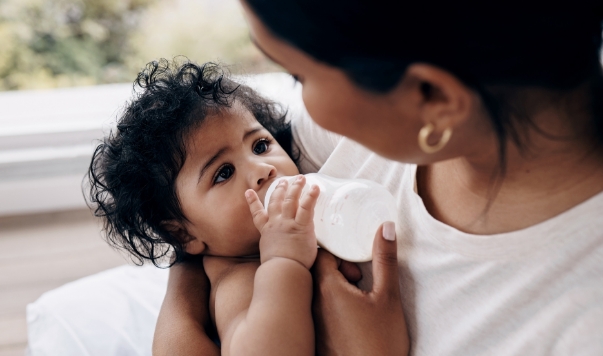
In February 2021, the U.S. Food and Drug Administration (FDA) began warning consumers to not use certain powdered infant formula products, which caused the largest formula maker in the United States to issue a voluntary recall and shut down the manufacturer. This voluntary recall increased the scarcity of access to infant formula for many families across the United States, as there was already a shortage of formula related to supply chain issues due to the pandemic. The facility that issued the recall is not only the largest supplier of infant formula in the United States but also the key supplier of specialty formulas. They are the only supplier of formula for older children and adults with rare metabolic diseases.
The ongoing shortage of baby formula in the United States highlights the socio-demographic disparities that exist in breastfeeding rates. The Centers for Disease Control and Prevention (CDC) found that in 2018, only 25.8% of all infants born in the U.S. were exclusively breastfed through six months, with the average at 28.8% for white infants and 19.8% for Black infants. Fewer Black infants (75.5%) are ever breastfed compared with Asian infants (92.4%), non-Hispanic White infants (85.3%) and Hispanic infants (85.0%), according to the CDC.[1]
Data also shows that the Special Supplemental Nutrition Program for Women, Infants, and Children (WIC)—the federal program housed within the U.S. Department of Agriculture (USDA) intended to support healthy nutrition for infants in families with low incomes—reduces breastfeeding rates. Infants eligible for and receiving WIC supplements are less likely to ever be breastfed (76.9%) than infants eligible, but not receiving WIC (83.3%) and infants ineligible for WIC (91.6%).[2]
The current formula shortage poses risks to the health of babies who rely on formula for nutrition and could result in poor health outcomes for babies at risk. In addition to WIC, there are federal, state, and local programs designed to improve maternal and child health outcomes.
One such federal initiative complementary to WIC is the Health Resources and Services Administration’s (HRSA) Maternal, Infant, and Early Childhood Home Visiting (MIECHV) program. WIC serves to safeguard the health of low-income pregnant, postpartum, and breastfeeding women, infants, and children up to age five who are at nutritional risk by providing nutritious foods to supplement diets, information on healthy eating including breastfeeding promotion and support, and referrals to health care.[3] The MIECHV Program supports home visiting for pregnant women and parents with children up to kindergarten entry living in communities at risk for poor maternal and child health outcomes and offers families the necessary resources and skills to raise children who are physically, socially, and emotionally healthy and ready to learn.[4]
To further support the nutritional needs of MIECHV families, the American Rescue Plan (ARP) Act of 2021 amended Section 511A of the MIECHV legislation allowing programs to provide pre-paid grocery cards (among other supports) to families participating in MIECHV in response to the COVID-19 public health emergency.[5]
Many WIC recipients are also enrolled in MIECHV programs. Both programs have a common goal of positively improving maternal and child health outcomes for women, children, and families in need. WIC serves about half of the infants born in the United States who are low-income and nutritionally at risk and supports the purchase of formula for moms and families of young children.
While there traditionally have been rules about what products families can purchase with WIC benefits, in view of the ongoing shortage the USDA has been working with states to relax those rules to help deal with the effects of the shortage. The USDA is continuing to work with WIC agencies as they review and implement these flexible solutions to the shortage crisis. The flexibilities include giving parents the ability to change formula without documentation from their doctors, use more of their monthly WIC allowance to buy formula, and exchange the recalled formula for other available brands.
Along the same lines, several states (e.g., Arizona, New Mexico, and New York) use their home visiting programs to help families locate the formula they need.[6],[7],[8] These, as well as many other states, are also helping families differentiate between safe and unsafe formula alternatives, based on the information provided by the Maternal Child Health Bureau within HRSA. Many states provide this information in various places on the internet and during home visits.
Collaboration of the programs is encouraged and takes place at Federal, State, and local levels throughout the United States. In fact, the USDA Food and Nutrition Service (FNS) and the U.S. Department of Health and Human Services’ HRSA are partnering to encourage collaboration between state and local agencies and grantees operating the Special Supplemental Nutrition Program for WIC and MIECHV so they can work together to develop shared strategies for improving maternal and child health outcomes.[9]
The formula crisis presents a clear opportunity for federal to local inter-agency collaboration between USDA and HRSA given the shared goals of WIC and MIECHV. As state and local agencies and grantees share resources and best practices for reaching and supporting families, families in need are navigating the challenges of the formula shortage. This collaboration ensures that these important programs are having their intended effect.


